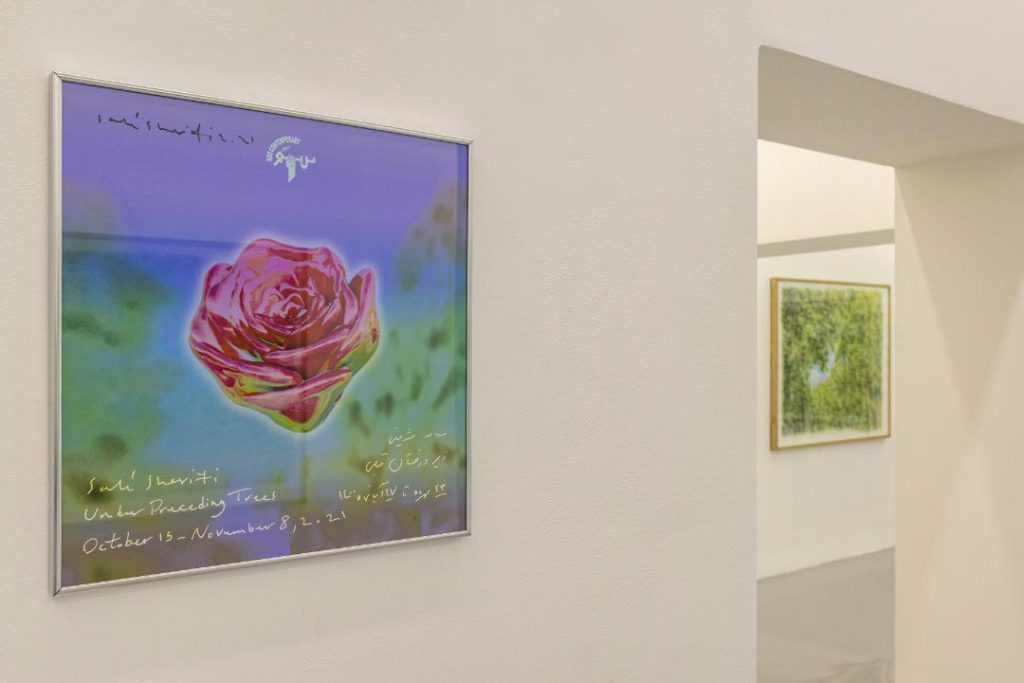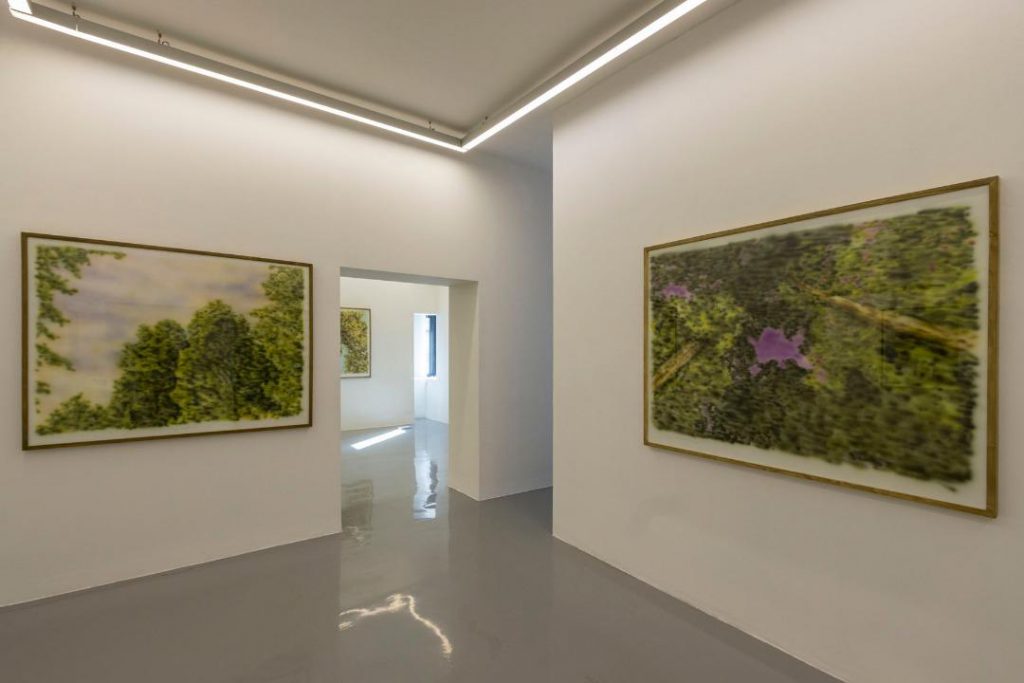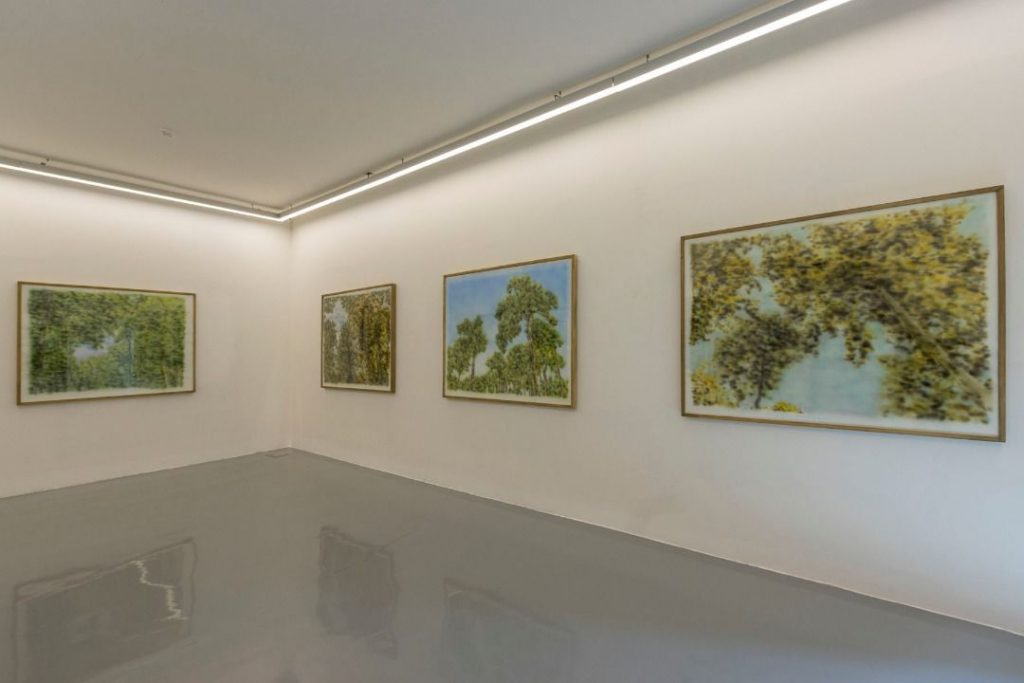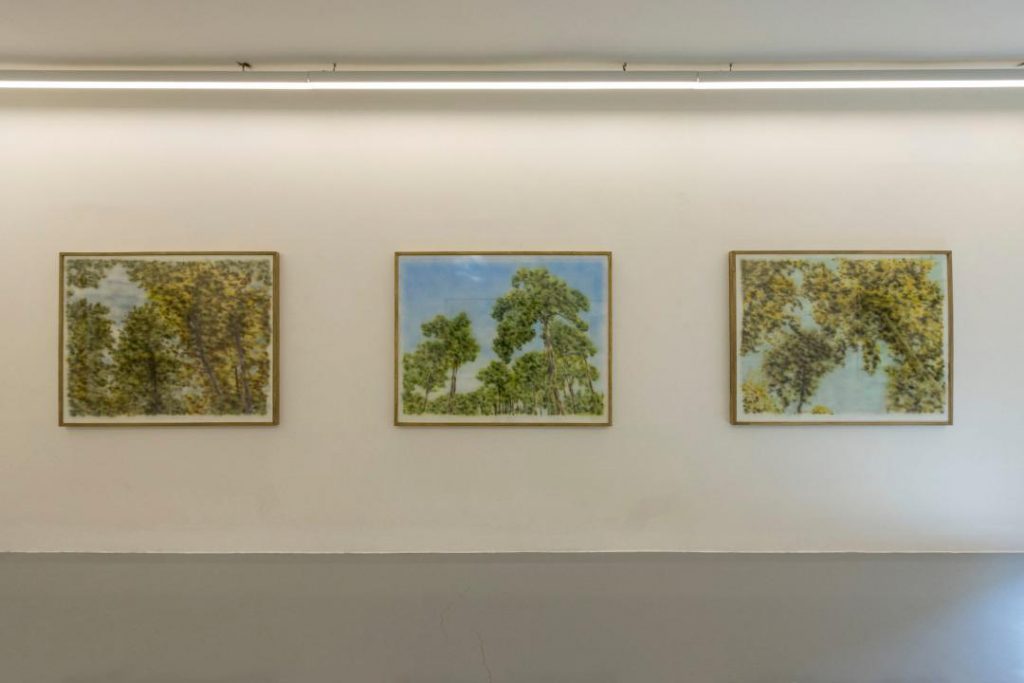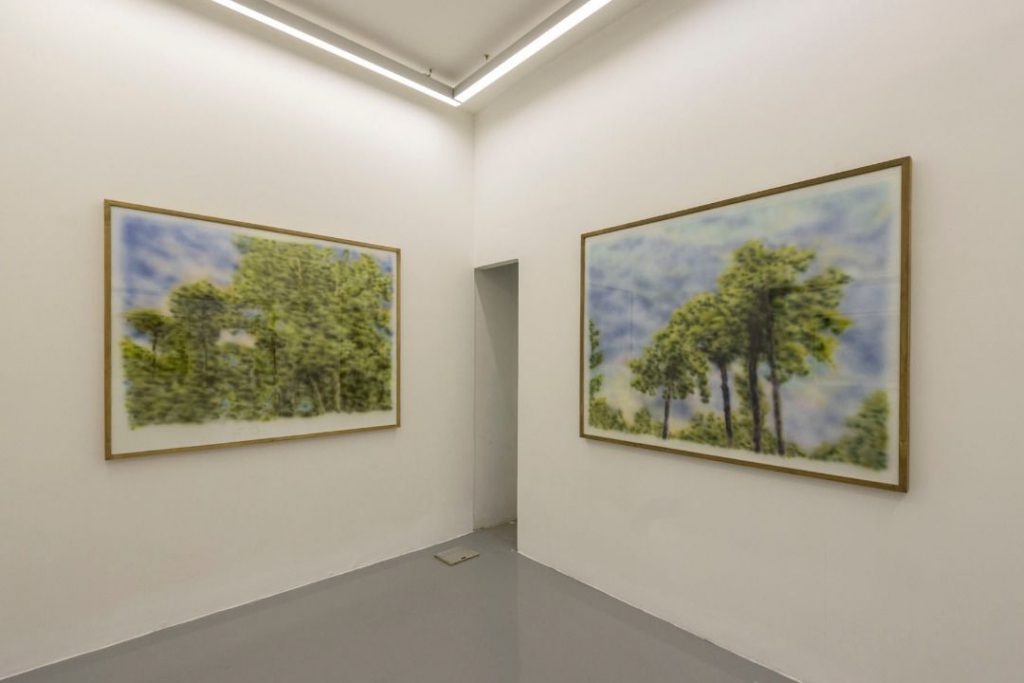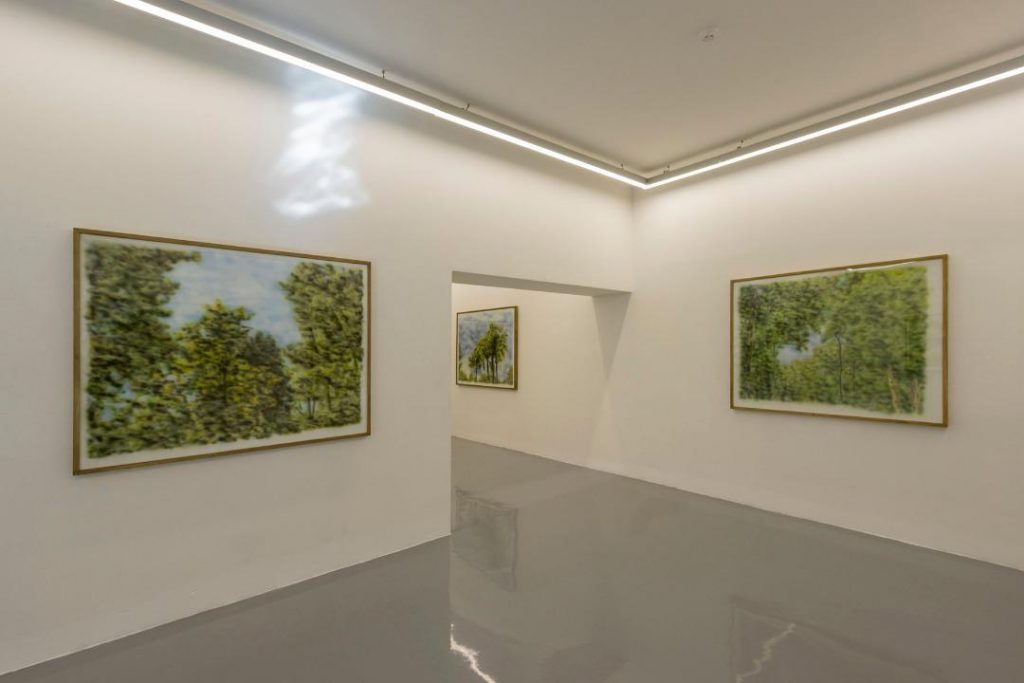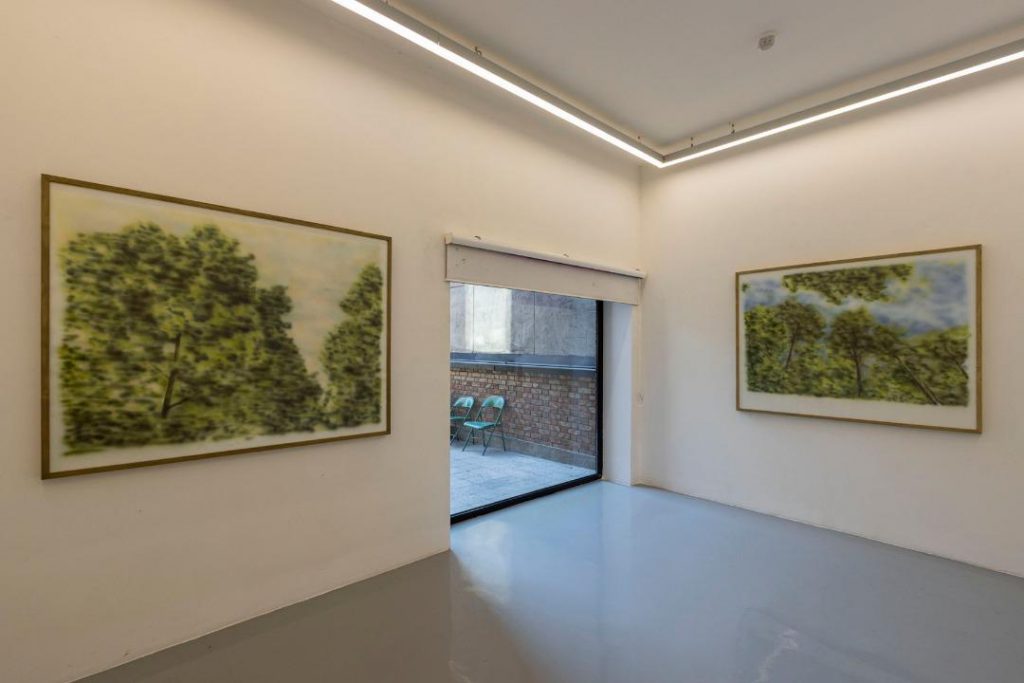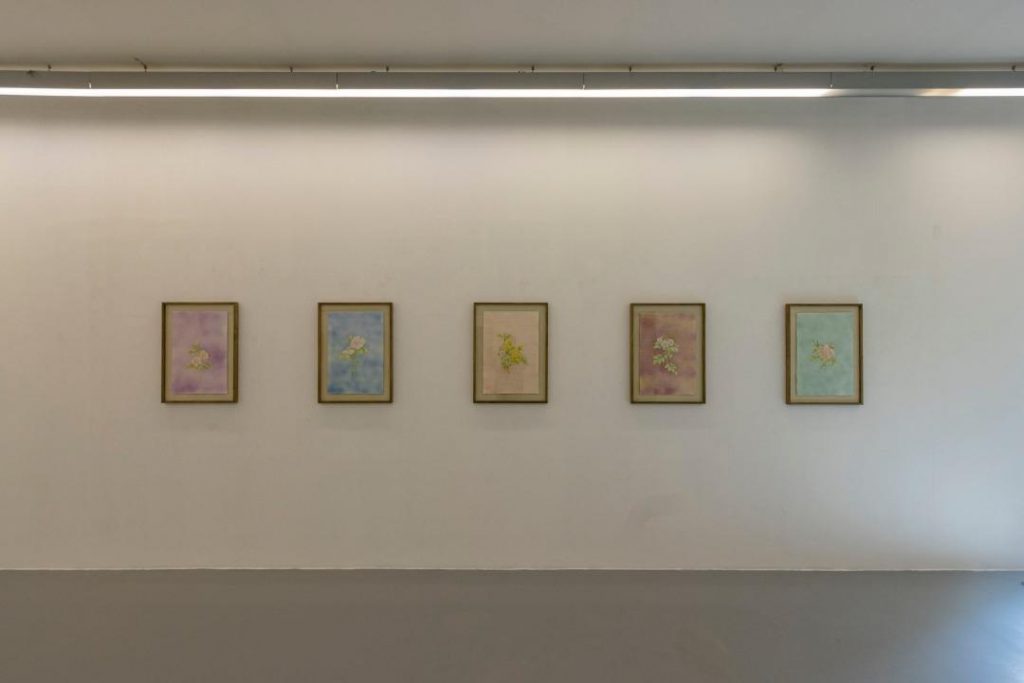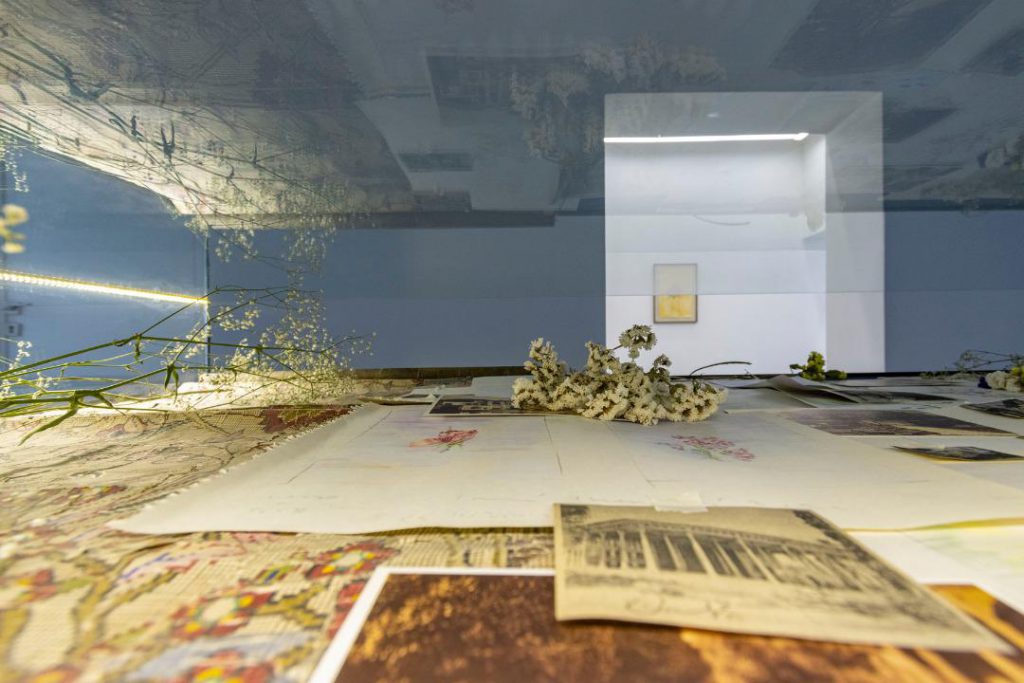Under Preceding Trees
One-person Exhibition
October 15 – August 6, 2021
Sale Sharifi
Under Preceding Trees is the result of my recent explorations in the idea of the Persian Garden, with a special focus on Safavid (1501-1736) and Qajar (1789-1925) periods. Unlike my previous series “Bygone Glory” which concentrated on the depiction of the elements of the Persian Garden, in the recent works I have omitted human-made elements and instead imagined myself in situations to remember things that I have never actually seen. For this act of remembrance, I have visited what is left of those gardens, photographed and documented them, reviewed older images, compared them to related texts from the period, especially travelogues, and have thus tried to portray the past. I believe one of the shared aspects in remembering something and in reviewing its history is the vague image that is created in our minds. The blurry trees painted in this series are an allusion to the same effect and the murkiness of the past. The exhibition of “Under Preceding Trees” includes three components: paintings of trees, flower paintings, and an audiovisual installation.
Trees
Among the different views one could potentially have in the Persian Garden, perhaps only one perspective has remained relatively unchanged throughout the years, aside from minor changes in the concentration of trees: the view looking at the crowns of trees. In the beginning, Persian Gardens were the properties of the rulers. Then, members of courts and the rich elite acquired gardens of their own. Gardens were private properties, and by reviewing literature and travel writings by Iranians visiting Europe during the reign of Naser al-Din Shah Qajar, we encounter descriptions of public places under labels such as “People’s Garden”, “Place of Public Recreation”, “Public Garden”, and “People’s Grounds”. These seem to have been the initial phrases describing “parks” for Iranians: a garden belonging to the public, or grounds that could be used for recreation or picnic, without the need to move outside the city. By painting tree crowns that we have indeed seen in public gardens, I have sought to depict familiar images of the past; blurry, memory-like pictures of what the rulers of yesterday enjoyed.
Flowers
As an ever-present part of Iranian visual culture, I have visited and revisited flowers through my years of work as a painter. They are an essential part of Iranian art and culture; from “Gol-o Morgh [Flower and Bird]” school of Persian Painting, to the decorative role of flowers in Safavid-period architecture, multicolored tileworks of the Qajar period, Mozaffar ad-Din Shah Qajar’s photographs sitting beside flowers and bushes, Moeer al-Mamalek’s accounts about Reza Shah’s fascination with flowers, and even My Uncle Napoleon’s love for his rosa canina.
In the flowers of “Under Preceding Trees”, four of the pieces are based on bouquet patterns on the entrance of Isfahan’s Chehelsotoon Palace. The paintings differ from the originals in color and detail, but the general form has remained identical to the Safavid-period patterns. In Sadegh Hedayat’s 1932 brief travelogue on his journey to Isfahan, he writes: “there are reliefs of flowers in the palace’s entrance that are covered in plaster, and then painted over in blue” (Sadegh Hedayat, “[Esfahan, Half of the World]”, 1932). Perhaps he was referring to the same flower bouquets and their being covered with plaster a sign of [Isfahan governor and Qajar prince] Zell-e Soltan’s cruelty. These reliefs were later restored and are now in good condition.
Three of the flower pieces have been modeled after paintings in Isfahan’s Hasht Behesht Palace. Moreover, five pieces have been inspired by the evolution of Persian painting under Western influence during Pahlavi era (1925-1979). In this revolution, while the traditional imagery remained intact, many aspects of Western styles were introduced and became prevalent, especially realistic forms. These five pieces are named after the palace/gardens that were frequented by the court and the administration officials during the Pahlavi era. Their color palettes have been subjectively composed according to the historical events.
Audiovisual Installation
In this series of works, my research process took me to exploring ideas that became increasingly fascinating. In order to share some of the experience, I have sought to go beyond the mediums of painting and drawing. In addition to its main pieces, “Under Preceding Trees” includes a variety of notes, images, pieces of poetry, and drafts. I have sought to present these through an audiovisual installation.
Press Release:
Going through a visual study of Salé Sharifi’s recent series, “Under Preceding Trees”, we are welcomed by trees that have been depicted in a dream-like and blurry style: he has painted tree crowns based on his observations and the documents he has collected about gardens and palaces remaining from Safavid and Qajar periods in Iran. He uses this approach to review memories that he has not personally experienced, yet by examining the current state, opens a window into the history of these gardens and estates. While his work utilizes many of traditional Persian painting traditions, the paintings have been mainly created using contemporary techniques, material and media to portray the blurred nature of the act of remembering by hinting at the distance we experience in digging into our collective memory. In addition to the trees, the artist has produced intricate drawings of flower patterns in the palaces of the periods, the buildings surrounded by the vast gardens. Delicate details of the flower reliefs, like a living organism, aim to sit the buildings comfortably within the environment of the garden. Moreover, the artist has used visual, contextual and narrative allusions to reflect on the means of recording history in the past, including travelogues and travel diaries, the history of photography and the industry, architecture, and administrative records. The artist’s mysterious depictions and fluid approach to painting show moments that he has meticulously explored, and then left forgotten as blurry layers.
Shirin Gharavisky, Founding Director, Soo Contemporary
